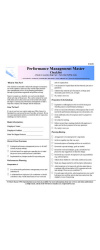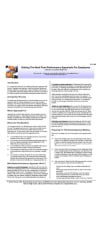Summary: If you think of an organization as a ship, the “leader” is responsible for planning out the destination of the trip. However, no matter how good a leader is in creating strategy and planning, if the strategies and plans don’t get implemented, they are worth less than nothing. So, what’s the critical link between planning and getting things done? Effective leadership. Let’s look planning methods, and how leadership fits into the planning – doing relationship.
Traditional Planning Methods
The traditional way for organizations to plan is for a group of people, usually executives/management, but sometimes including employees, to get together for some period of time each year. Generally, inadequate time is allocated to the exercise, but if it is completed, it results in a document that contains a mission statement, broad organizational goals, and other elements, as deemed appropriate. Then, the plan is usually hidden away somewhere, never to be seen again. Traditional methods yield traditional results. As a wise man once said “If you keep doing what you have been doing, you will get what you have always got“.
It needn’t be this way.
Reconceptualizing Strategic Planning
Planning should be considered as a blueprint for change. The plan should be the basis for introducing controlled change into an organization so it can adapt to changing times. By anticipating shifting demands, the plan serves the purpose of allowing the organization to control its own direction, rather than waiting until external forces demand change (and demand change NOW). In addition, the plan allows for consistent monitoring of success, and re-examination of the degree to which organizational resources should be structured and allocated to achieve future goals.
But, if we look at strategic planning in this light, as a blueprint for change, we also need to consider that any organization has built-in inertia… the tendency to keep on doing what one has been doing. On its own, the strategic planning process, as traditionally undertaken, is insufficient to overcome this inertia. Other forces need to come into play if the plan, and proposed changes get implemented.
Leadership – The Key Force
In the context of strategic planning, leadership means a number of things. We can outline the role of leadership in the following ways, keeping in mind that leadership may come from appointed leaders (management and executive) and from the ranks (those without formal authority to lead).
Those in leadership roles ensure that as many members of the organization as possible buy into the values, mission, and broad organizational goals. There are two components to this function. First, leaders manage the perceptions of staff with respect to the planning process. Remember that most people have experienced the “plan-in-the-drawer” syndrome, where effort expended in planning is seen as wasted when the plan is ignored. Prior to the planning process, leaders must emphasize that THIS TIME, things will be different.
Second, leaders manage the planning process so that staff feel that they have adequate input into the process, that they are heard, and their values and visions are incorporated into the final plan and its implementation. Specifically, leaders arrange things so that the process is open, and conforms to accepted rules of communication. That may mean hiring an external consultant to orchestrate the planning sessions. It will certainly mean that rules get established to guide participation. Everyone who wants to participate should have the opportunity, and even reticent staff should be gently encouraged to involve themselves.
While managing perceptions of the planning process is important, the critical role of leadership occurs after the plan has been completed. Leaders must treat the planning results as the “organizational signposts that guide behaviour and decision making“. After all, nobody is going to take a plan seriously if the formal leaders ignore it, or never refer to it again.
If you are serious about using strategic planning as a tool for organizational success, consider some of the following actions.
A. When working with staff to set individual objectives, be sure to mention how the individual objectives will contribute to the achievement of the mission and organizational goals as outlined in the strategic plan. Make sure that the employee is familiar with the plan when individual objectives are set.
In addition, at each meeting with each employee, work with the employee to help him/her determine how the values outlined in the strategic plan apply to them. In other words, given the particular values, strategic goals and mission statement how is the employee to behave or make decisions.
B. Once the strategic plan has been completed, the formal leader of the organization (and perhaps others) should present and discuss the plan with the up-line manager or executive. It is NOT sufficient to send a copy. Because you will need up-line support to implement the plan, you will need their commitment, and commitment will only come from discussion and explanation of the plan.
C. At staff meetings, when decisions are required, explain how the strategic plan is used, or is to be used to make decisions. If you are the manager communicating a decision you have made, explain your rationale in light of the mission, values and goals expressed in the plan. If you are using a participative decision making process, help staff refocus on these components of the plan, so that they can be used to guide decision making
D. When doing performance reviews with staff, ask the individual to explain how his or her actions are consistent with the elements of the plan. How has their action contributed to organizational goals? Has their behavior been consistent with organizational values? What needs to change so that the individual can further contribute to implementing the plan? Consider recognizing contributions to achievement of the plan, even if the individual did not have specific responsibility as outlined in their individual objectives. And, when setting future objectives, consider writing an objective that refers to the values expressed in the plan. For example: “Will act in accordance with the organizational values expressed in the strategic plan”. If you go this route, make sure that the implications of these values are clear to the employee in terms of his or her behaviour.
A final role of leadership is to create more leaders. One goal that formal leaders (executives, managers) can set for themselves is to encourage down-line employees to take on some of the leadership roles outlined above. This can be particularly effective in decision making. The ideal situation is for staff to internalize the plan to the extent that some take on the role of reminding people of the plan, and its relevance to any given decision-making process. Cultivate leaders in your organization by giving increased responsibility, and encouraging this kind of leadership behaviour.
Conclusion
Leadership, regardless of when it comes from formally appointed leaders, or informal leaders, provides the link between planning and doing. Effective leadership helps alter perceptions about strategic planning, and the organization itself, helping to overcome inertia, the tendency to keep things the same.
Without leadership, most strategic plans will end up as dead pieces of paper. Most importantly, when planning occurs without leadership, cynicism increases when staff see that the plan is being ignored, or even violated. The outcome of this is that formal leaders suffer a loss of credibility.





